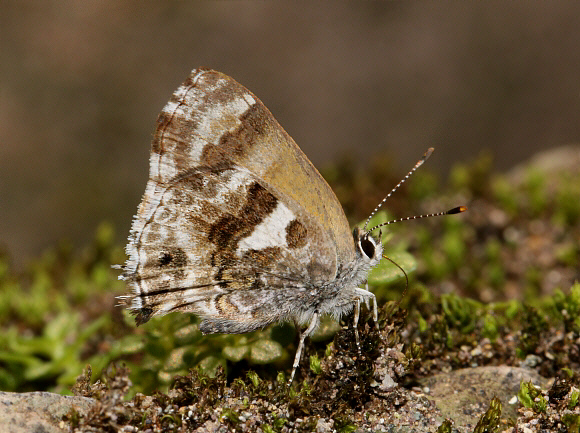
Introduction
Almost all neotropical Theclinae species are placed in the Eumaeini. The tribe is not particularly well represented in collections, so until fairly recently a high percentage remained unstudied, and were inappropriately filed away in the ‘convenience’ genus Thecla. Many taxonomists have attempted to rationalise the systematics of the Eumaeini, the most recent being Robbins who published a revision in 2004, reclassifying the taxa into 83 genera. Currently there are 1058 known species. Taking into account their small size, secretive behaviour, and the great similarities between many species, it is estimated that about another 200 species probably remain to be discovered.
The genus Strymon comprises of 54 known species, variously distributed across the Americas from Canada to Chile and Uruguay.
The males of most species have metallic blue patches on the upper hindwings, sometimes also on the forewings. Females of all species have plain earthy brown uppersides. All species have a pair of short ‘tails’ at the tornus of the hindwing, although these are often lost after the butterflies have flown for a couple of days. The undersides vary considerably – e.g. in the davara group of species they are marbled in shades of brown; the acis group have pale brown undersides with conspicuous white hairstreak lines and a large orange patch near the tornus, and the basilides group have pale undersides with a broken band of reddish spots.
The genus is named after the Greek river Strymon. It refers to the river-like ‘hairstreak’ line on the underside of many Eumaeini genera including Strymon, Hypostrymon, Nesiostrymon, Ministrymon, Chlorostrymon and Electrostrymon. In many species this streak is indistinct or is broken up into a series of spots.
Strymon davara is known only from Peru.
Habitats
This species is found in rainforest and cloudforest habitats at altitudes between about 500-1000m.
Lifecycle
Unknown.
Adult behaviour
The butterflies are usually encountered in open sunny situations, either perching on boulders or on the foliage of bushes.
